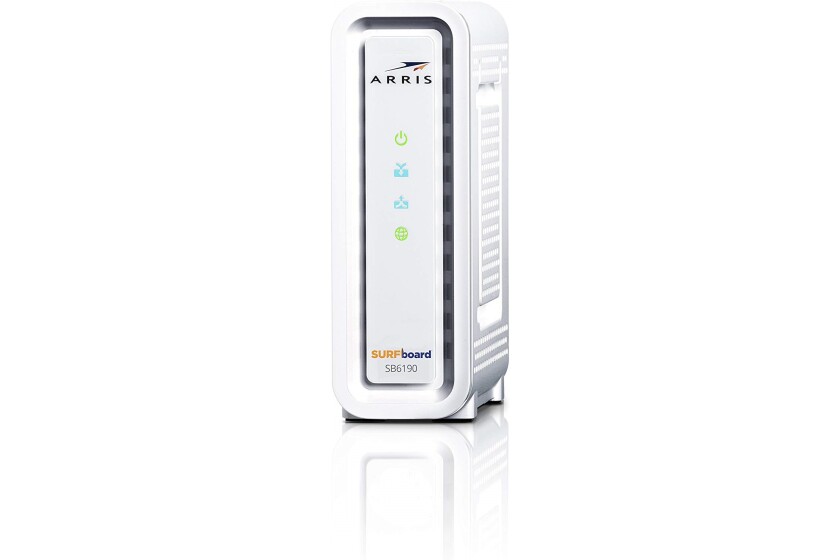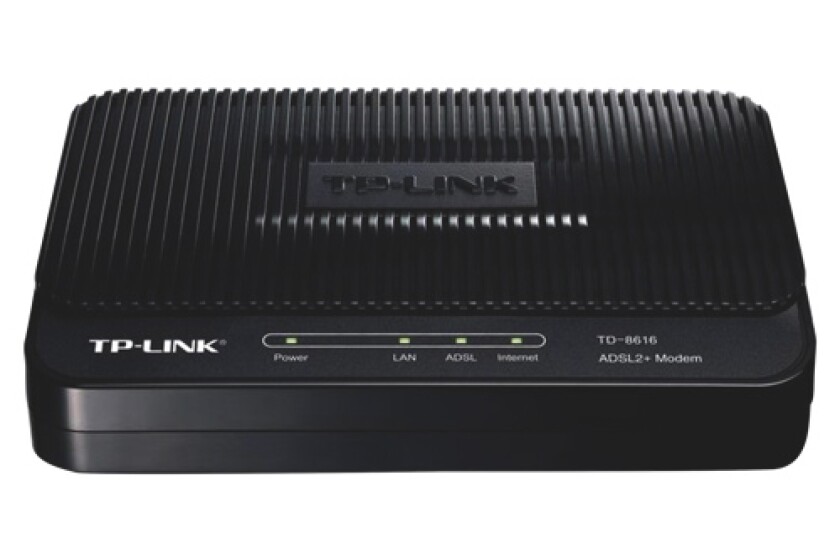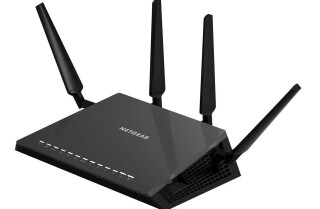Best Modems to Keep Your Internet Speeds Fresh
-
ARRIS SURFboard DOCSIS 3.0 Cable Modem -
Motorola DOCSIS 3.0 Cable Modem -
TP-Link TD-8616 ADSL2+ Modem -
NETGEAR Broadband ADSL2 Plus Modem -
Hughes HN7000S Satellite Modem -
Buyer's Guide
Modems are one of the most important computer devices when it comes to setting up a network connected to the Internet. The best modems in 2022 connects directly to an incoming Internet signal, provided by your Internet Service Provider (ISP), and then relays that signal to other devices. There are quite a few different types of modems out there, based on the type of Internet signal you receive and the setting for your network.
Cable and DSL modems are used for high-speed internet, replacing older dial-up modems that established an Internet connection through a phone line. Satellite modems work in a similar way, communicating with a satellite relay to receive and send signals. With so many options and devices available, take a look at the modem buyer’s guide below for more information on picking the right model for your setup.
Here are the best modem to keep your internet speed fresh of 2022
ARRIS SURFboard DOCSIS 3.0 Cable Modem - Best Modem Overall
This is just about as good a modem as you can ask for, offering tremendous data rates and versatile connectivity. It supports incredibly high speeds of up to 1.4Gbps download and 260Mbps upload data rates, which should be more than enough for just about any cable internet provider out there. This is made possible by 32 download channels and eight upload channels, which minimizes any issues with bottlenecking internet speeds on your end. This modem is easy to use and set up, with support for IPv4 and IPv6, which lets it work easily with a wide range of cable service providers and routers. It is a fairly expensive option, but the level of speed and performance more than justify the cost. This modem has a one-year warranty, which is a bit low for its price but otherwise this is an excellent choice.
Motorola DOCSIS 3.0 Cable Modem - Runner Up
Cable modems can get incredibly pricey, especially if you opt for one that offers top-of-the-line performance. However, you're essentially wasting money if you purchase an expensive modem that is capable of higher speeds than what your cable subscription supports. Unless your internet plan is capable of 300+ Mbps, you may as well save your money by going with our top budget-friendly pick, the Motorola MB7420.
This modem is a clean-sheet design that no longer resembles the older Arris/Motorola SURFboard models, and several user complaints have been addressed as part of the update. The modem itself runs much cooler than before, and the status lights have been dimmed to reasonable levels so as not to keep people in adjacent rooms awake at night. The MB7420 supports up to 686 Mbps download rates and 123 Mbps upload rates, thanks to sixteen downstream channels and four upstream channels. While it's not well-suited for super-fast Gigabit subscriptions, it still has support for DOCSIS 3.0, and is fully backwards-compatible with DOCSIS 2.0 and 1.1 if that's the only option available in your area. The MB7420 typically retails for around $55 online; unless you're planning on upgrading to a faster internet subscription in the near future, it'll likely be the last modem you need to buy for years.
TP-Link TD-8616 ADSL2+ Modem - Honorable Mention
This is a solid device that is easy to set up and works with a wide range of systems and providers. It's a pretty fast unit with support for data rates up to 24Mbps downloading which is pretty comparable to similar modems out there. This model supports the latest ADSL2+ standards and works with a wide range of service providers. Perhaps the biggest weakness with this modem is the lack of additional features and connectivity. It has only a single Ethernet port, which is not unusual for a basic modem, but certainly limits what it can connect to. If you already have a network bridge or wireless router that you plan on using, then this is a great option that provides excellent performance and can connect through an Ethernet cable. Otherwise, you'll need additional hardware if you plan on any connectivity beyond a single device.
NETGEAR Broadband ADSL2 Plus Modem - Consider
This is a great choice if you just want a simple modem to connect to a single computer or other device. It works with a wide range of DSL service providers and includes the latest ADSL2+ and other networking standards to offer great performance and good future-proofing. This modem is very easy to set up and get connected so it's ideal for use in a home or similar environment where additional features aren't really needed. It only has a single Ethernet port which is perfect for one computer, but you need a router or gateway if you want wireless or additional physical connections. The simplicity of this modem is a perk but can also be a problem; if you're an IT professional looking to monitor and control every aspect of your modem/internet service, then this is probably not the model for you. For everyone else, it's a good option.

Hughes HN7000S Satellite Modem - Best Satellite Modem
While a lot of satellite modems are clearly designed for corporate or government use as part of a large computer system, this is a great model for a wide range of uses. The design on it makes it ideal for placement just about anywhere and you can easily situate this modem in any kind of environment. It's pretty easy to set up and use, plus you can control a lot of features if you have the technical background to do so. Download rates can get up to 121 Mbps with upstream rates up to 1.6 Mbps, with multicasting support for optimal performance. It has both DVB-S and DVB-S2 support so it works with a wide range of satellite networks.
Buyer's Guide
Despite the importance of a good modem when setting up a network, there are only a few major concerns you need to look at when picking the right device for your system. Consider the different types available and pick one that is right for the type of Internet signal you have, and also be sure that it is compatible with your particular ISP.
Look at the interface connection used by each modem to ensure you pick one that works with your computer or other hardware, and consider any additional features you need. The transmission rate is the most important technical feature when looking at modems, as it directly impacts how quickly you can send and receive data, so be sure to pick the fastest option you can.
Types of Modems
Dial-Up Modem
These are older devices used to connect to the Internet over a telephone line. Unless you are in a very rare and specific circumstance where you only have access to dial-up Internet, there is no reason to choose this type of modem.
Cable Modem
Used to connect to a cable Internet service, this is one of the fastest options on the market. If you have cable Internet, then this is the modem to choose. Be sure to pick one that is fast enough and compatible with your specific ISP.
DSL Modem
Digital Subscriber Line, or DSL, uses traditional telephone lines to deliver high-speed Internet access. If you have a DSL signal, then choose this type of modem, but be sure that it works with your ISP.
Satellite Modem
A satellite modem receives a wireless Internet signal from a satellite, providing you with a connection just about anywhere. These are specialty devices that are typically used to provide internet connections to remote areas that are not served by traditional cable or DSL.
In-Car Modem
This is another specialty item that turns your vehicle into an Internet hotspot. While many modern mobile phones can act as wireless hotspots, using one in a moving vehicle can be difficult as you transfer from one signal area to the next. In-car modems ensure consistent coverage and signal strength no matter where you go.
Gateway Modem
A gateway modem receives and sends signals along the Internet just like other modems, but also creates a Local Area Network (LAN). This is typically used in a residential household or small office if you want to connect to the Internet and create a small local network all with a single device. If you plan on using a separate router, then you do not need a gateway modem.
Interface
The interface refers to the connections available on a modem, which you then use to connect a router, computer, or other hardware to it. Most modems have one input connection that you use to connect to the source of your Internet signal, either a phone line or cable input. From there, you get at least one interface output connection, which you use to connect your modem to other hardware. This is usually an Ethernet or Cat-5 cable that connects to a port on your router, computer, or other device.
Some models can include a PCI or PCIe connection or even a USB port for connecting other devices. Choose a modem based on the connections you have on your computer or router to make sure you can easily plug your modem into your other hardware.
Maximum Data Rate
The data rate indicates the speed at which data is received and sent by the modem. This is important because the actual rate is determined by your ISP, based on the data rates they set, but your modem can bottleneck performance. If your modem only supports speeds that are slower than what your ISP provides, then you won’t be able to take advantage of the fast Internet you pay for.
You want to look at both upstream and downstream rates. Upstream indicates how fast you can send data, while downstream shows how fast you can receive it. Downstream (or received rate) is usually much faster than upstream.
ISP Compatibility
This can be easy to overlook, but it is very important to make sure that you choose a modem that is compatible with your ISP. Make sure you know what type of Internet you have - usually either cable or DSL - as well as the name of your ISP.
With that in mind, look at any modem you might be interested in and make sure it specifically works with your ISP, whether you have Cox, Time Warner, or another company. If you really want to be sure, contact your ISP and ask them if the specific modem model you plan on using is compatible with their service.
Additional Networking Features
While compatibility and data rates might be your biggest priority, there are some extra features that you should consider. Look for security and encryption features as you compare different modems, though mostly you want to be sure that any network security you plan on using will work with your chosen modem.
If you don’t already have a wireless router, then consider a gateway modem that provides you with a local wireless network as well as connecting to your Internet service. Finally, look for models that include some future-proofing thanks to support for the latest standards such as IPv6.
Manufacturer and Warranty
While the names of manufacturers of modems might not be familiar in every household the way that computer builders are, it’s still important to choose a company that provides reliable hardware in their builds. Manufacturers like D-Link, Netgear, and ARRIS produce good modems that work well and run nice and fast. While you can usually rent a modem from your ISP, buying one typically saves you money in the long run, but only if it lasts you a few years. A one-year warranty is the bare minimum you should look for, while two or three-year warranties are preferable.















